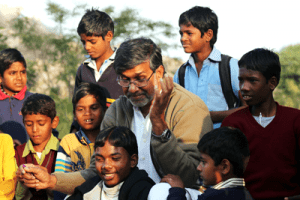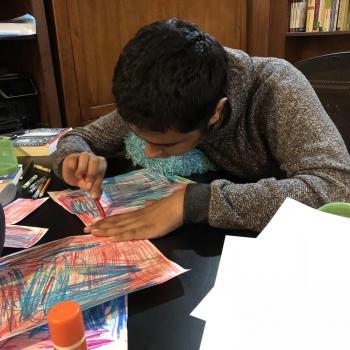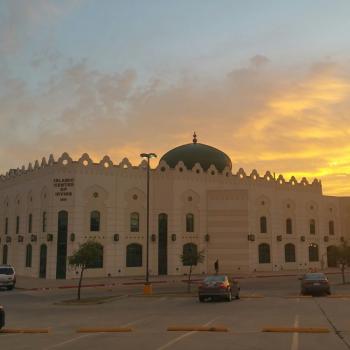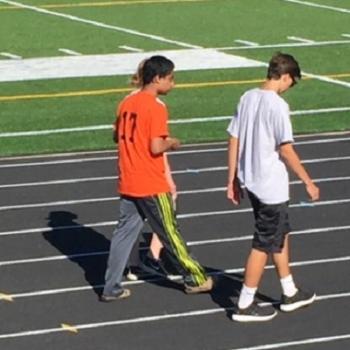The news and social networks exploded this morning with articles on the latest winners of the Nobel Peace Prize — 17-year-old activist Malala Yousafzai and 60-year-old childrens right’s activist Kailash Satyarthi. Suffice to say, the world has heard a great deal about Malala, literally breathing her heroic story of being a shot by the Taliban in the Swath region of Pakistan, to her miraculous recovery and finally harnessing the world’s attention showered upon her to advocate for girls’ education.
On Patheos Muslim, Muslimah Media Watch has covered Malala’s story from a number of media angles, including how the medial is missing the nuances of her story, to how she (and others) have their legitimately important stories often buried in Western stereotypes of Muslim women, to how she is perceived in her home country of Pakistan. But I wondered, how many of us know the story of Kailash Satyarthi? I have heard his name, but didn’t know too much about his work. As I looked into his life and his work, his philosophy and work proved remarkable. From this article on NDTV, here are 10 facts about his life and work:
-
He belongs to Vidisha in Madhya Pradesh. Trained as an electrical engineer, he turned into an activist for children’s rights at the age of 26.
-
As a boy, he was moved by other children who had to work, and whose parents were too poor to send them to school. He started a football club with membership fees paying the school fees of needy children.
-
He and a friend collected donations of 2,000 schoolbooks in a single day, a project that eventually became a book bank in his home town.
-
“If not now, then when? If not you, then who? If we are able to answer these fundamental questions, then perhaps we can wipe away the blot of human slavery,” Mr Satyarthi has said, summing up his philosophy.
-
In 1983, he founded the Bachpan Bachao Andolan (Save the Childhood Movement) to fight child labour. His efforts have helped rescue thousands of children from bondage, trafficking and exploitative labour.
-
With the help of NGOs and activists, he has organized hundreds of raids on factories and warehouses where children were being made to work.
-
He created “RugMark”, a scheme which certifies that carpets and rugs sold abroad have been made without the labour of children. The initiative turned out to be highly successful in raising international awareness about children’s rights.
-
In 1998, Mr Satyarthi was chairman of a global march against child labour that wound through more than 60 countries around the world. Children rescued from jobs in Asia, Africa and Latin America were among more than 1,000 people who ended the march in Geneva, at a conference of the International Labour Organisation (ILO).
-
A year later, the ILO approved an accord designed to protect children from jobs that expose them to danger or exploitation.
-
After Narendra Modi was elected Prime Minister, Mr Satyarthi tweeted, “A tea-boy dares his detractors by becoming the PM of India. Now it’s his turn to ensure that no child is forced to become a child labourer.”
Here’s more on Satyarthi’s work, from an article in the Thomson Reuters Foundation:
“‘Each time I have freed a child, the child who has lost the parents and the parents who have lost all the hope that the child would ever come back, and when I hand this boy or girl over to the mother and the mother embraces him or tries to put him in her lap, I cannot explain what kind of joy one can have,’ Satyarthi said.
The rescue of such children is not easy, but Satyarthi’s organisation has over the years managed to work closely with anti-trafficking police units and child protection agencies to save children and bring perpetrators to justice.
In one operation this May, police rescued 63 children and arrested 23 suspected child traffickers at Old Delhi railway station, acting on a tip-off from Satyarthi.
During an extensive interview, the bespectacled, bearded activist described how children were deliberately crippled or mutilated by traffickers, put on the streets and forced to beg.
Others were stolen from villages to work as child soldiers – their books and toys taken from their hands and replaced with guns and bombs, he said.
Corruption involving law enforcement officials and powerful public figures has helped fuel slavery in India, which is a source, destination and transit country for traffickers, Satyarthi said.
“Within India, huge trafficking is flourishing,” he said. “Traffickers are like the mafia. They are able to earn huge money and are able to bribe the law enforcement authorities so when we try to free those children, or oppose those perpetrators in the court, then it’s always dangerous.”
A global index on modern slavery last year showed that of an estimated 30 million people who are enslaved worldwide, trafficked into brothels, forced into manual labour, victims of debt bondage or born into servitude, half are in India.”
I urge you to read more about Mr. Satyarthi’s work and spread the news about what he does. Like Malala, the causes he champions are ones we must help elevate.












